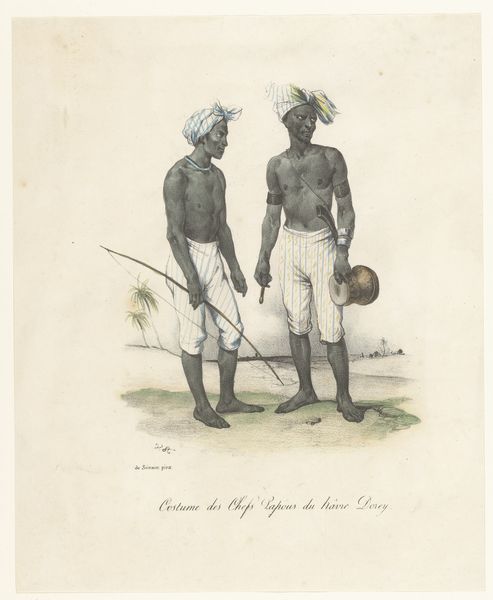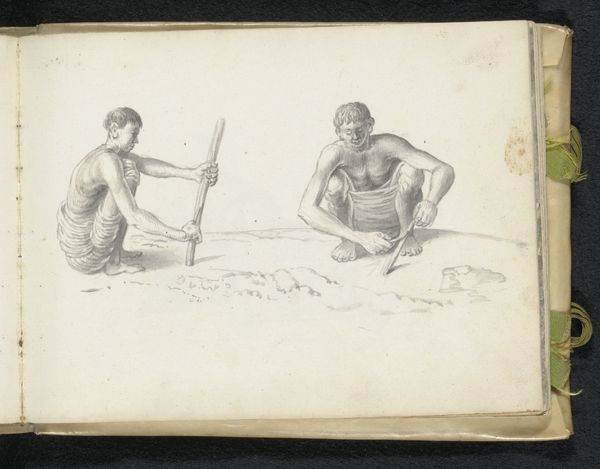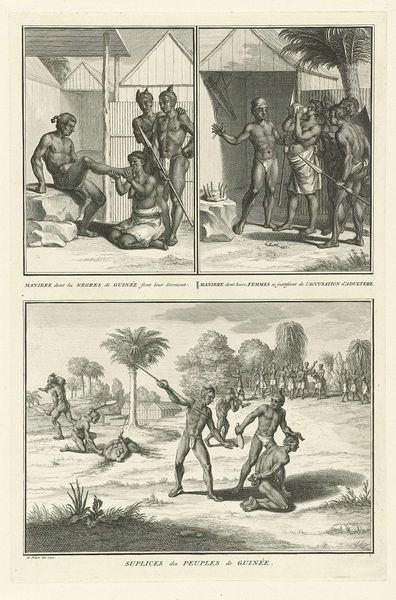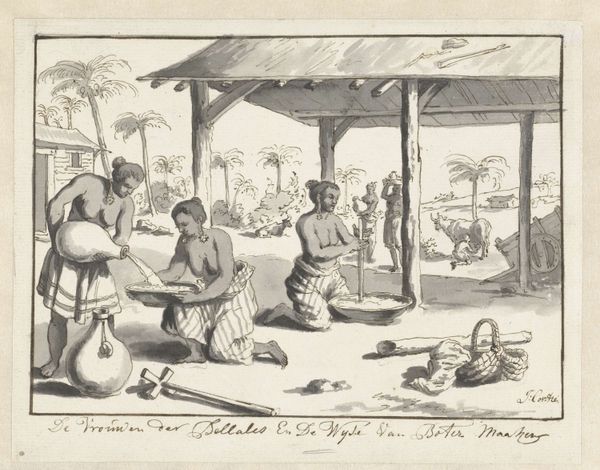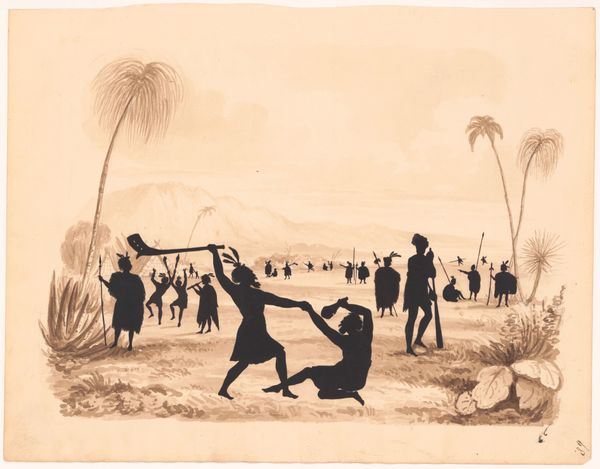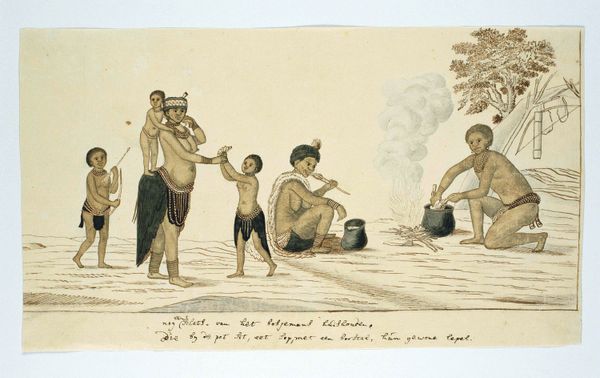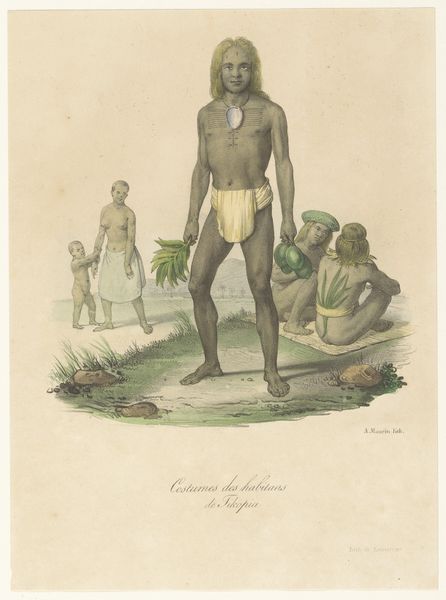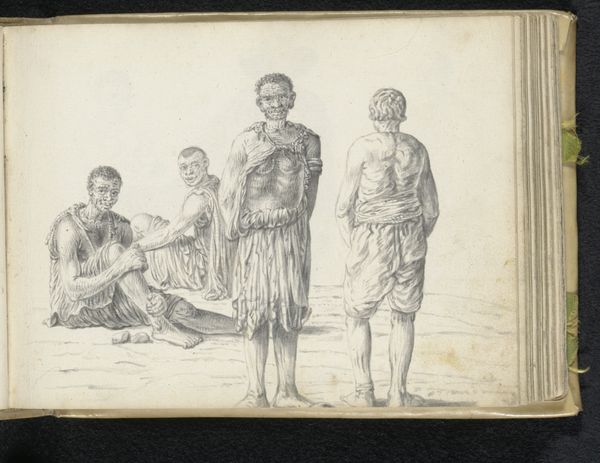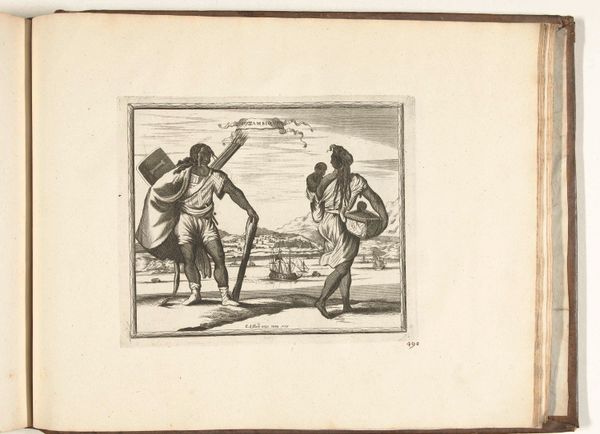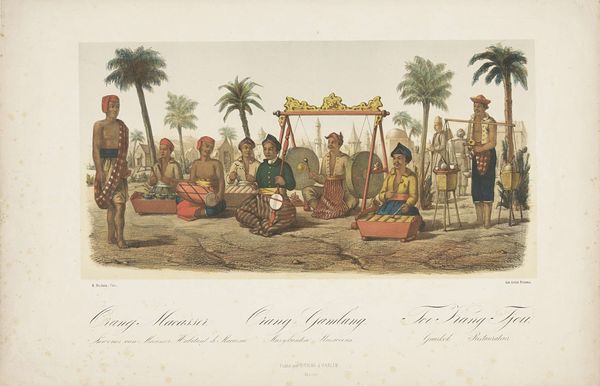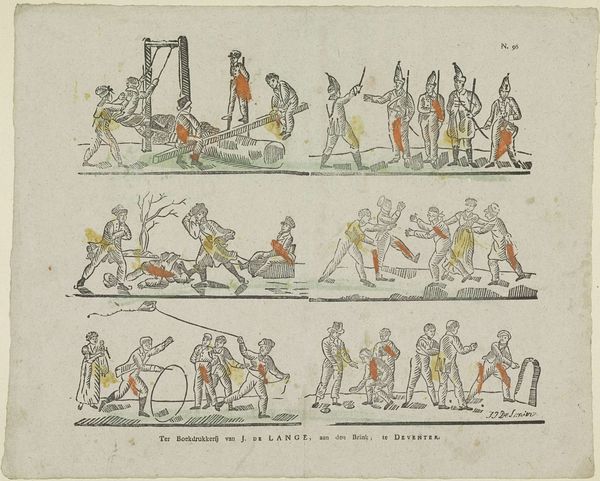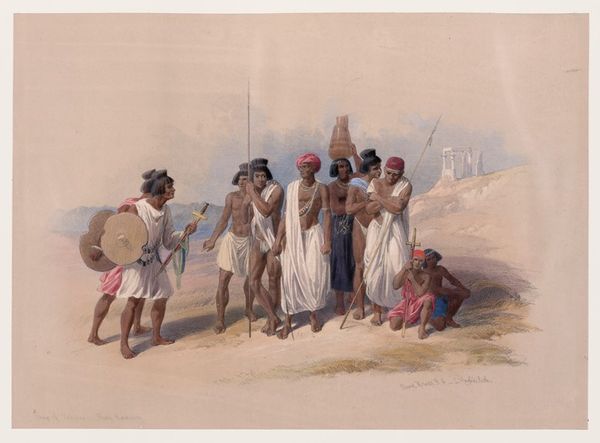
#
comic strip sketch
#
light pencil work
#
pencil sketch
#
old engraving style
#
cartoon sketch
#
personal sketchbook
#
sketchbook drawing
#
storyboard and sketchbook work
#
cartoon carciture
#
sketchbook art
Dimensions: height 177 mm, width 237 mm
Copyright: Rijks Museum: Open Domain
Editor: This is "Mannen van de stam der Bellales op Ceylon," made between 1744 and 1765, attributed to Jean Covitré. It appears to be a pen and wash drawing. The interaction between the two men in the foreground is striking. How do you interpret this work? Curator: It’s crucial to approach images like this with a critical eye. What seems at first glance like ethnographic documentation is, in fact, deeply entangled with the history of colonialism and the power dynamics inherent in representation. This drawing purports to depict members of the Bellales tribe in Ceylon, but who is the intended audience and what biases might Covitré, a European artist, have brought to the task? Editor: That's a good point. It does feel like a very outsider perspective. What aspects specifically hint at that colonial gaze? Curator: Consider the composition. The figures are presented almost like specimens, their bodies on display. This "scientific" observation served to reinforce a European sense of superiority by othering and exoticizing non-Western peoples. How might their own cultural practices have been misunderstood or misrepresented through this lens? Also, notice the setting; what does the implied labor signify here? Editor: It seems to create a social hierarchy between the figures. Perhaps the laboring figure is meant to emphasize some preconceived notion of race or class… I never considered this much context with older artwork. Curator: Precisely. By critically examining the context in which these images were created, we can begin to understand how they shaped, and continue to shape, our understanding of the world. It's a difficult process, requiring a questioning of our own assumptions and a willingness to engage with uncomfortable truths. Editor: Thank you! I see the need to look beyond the surface to understand artwork as products of cultural and political context. Curator: Indeed, this type of nuanced reading allows us to better grasp its place within a long, complex history.
Comments
No comments
Be the first to comment and join the conversation on the ultimate creative platform.
